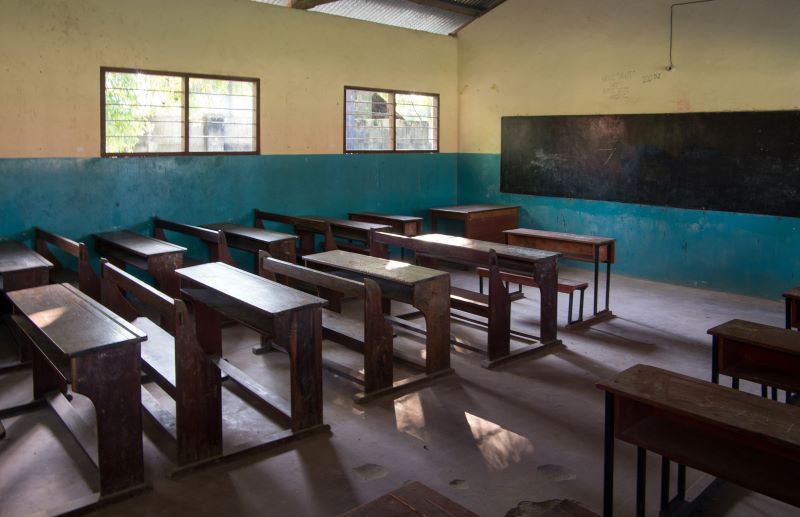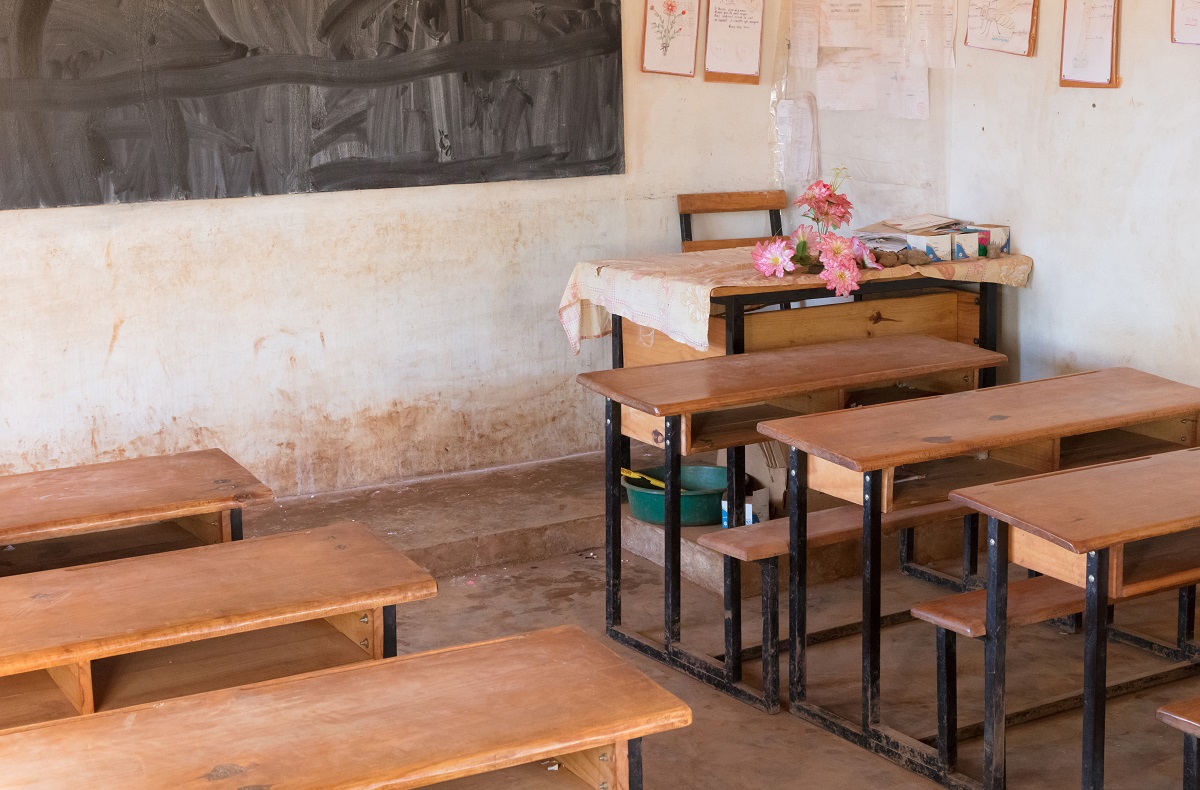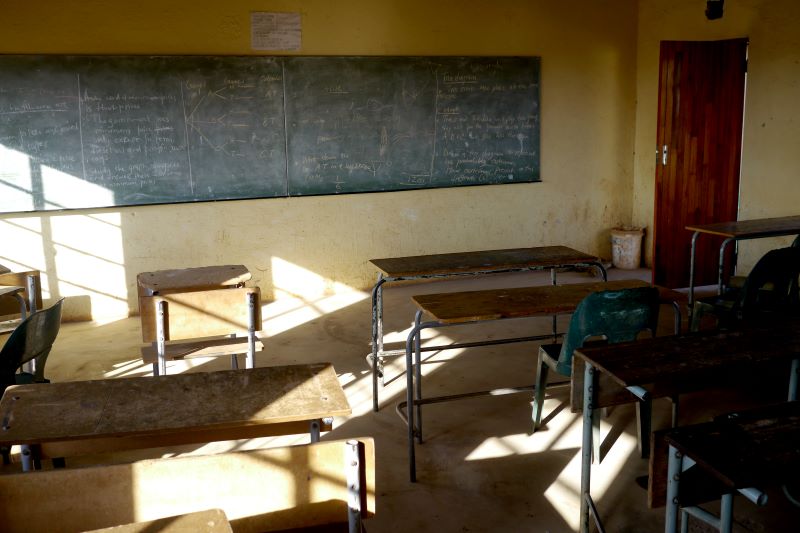Recommended

Blog Post

Blog Post
Far too many adolescent girls experience violence, both in school and out of school. Last year, we published analysis—drawing on household survey data representing more than 80 percent of girls aged 15-19 across sub-Saharan Africa—which showed that more than one in four girls report having experienced either physical or sexual violence at some point. We also found that both girls who are enrolled in school and girls who aren’t are exposed to high rates of violence. In other words, keeping girls home from school isn’t the way to protect them from violence: concerted action to tackle violence at home, at school, and in the community is.
Since then, we’ve updated our study with more detailed analysis. While our earlier findings all stand, we noticed a few important facts that we’ve incorporated into the study.
1. Whether girls enrolled in school are exposed to less sexual violence may depend on the type of sexual violence
We drew on two different surveys. The first is the Demographic and Health Surveys (DHS), which has the advantage of covering lots of countries in the region, but the disadvantage of limited questions about sexual violence. The DHS mostly focuses on “physically forced unwanted sex,” which is important to capture but is also only one form of sexual violence. The second source is the Violence against Children Surveys (VACS), which cover fewer countries but ask explicitly about other forms of sexual violence, like unwanted sexual touching and failed attempts to force the respondent to have sex.
For the six countries that overlap between the two surveys—Kenya, Malawi, Nigeria, Tanzania, Zambia, and Zimbabwe—in-school girls are less likely to have experienced “physically forced unwanted sex” (i.e., the DHS question) in the last 12 months in all six countries in the DHS; those in-school/out-of-school differences are statistically significant in four countries. On the other hand, in-school girls are more likely to have experienced at least some form of sexual violence in three of the countries in the VACS (statistically significantly so in one). Why? If we restrict the VACS data to just forced sex (the DHS question), in-school girls are more likely to have experienced this in only one of the countries (and that difference isn’t statistically significant).
What this suggests is that being in school may be protective against the most extreme forms of sexual violence but not against other forms. For the other 14 countries for which we have DHS (but not VACS) data, we see a similar pattern, where in-school girls report being less likely to experience “physically forced unwanted sex” in almost all countries. The big caveat to that claim is that these are not causal claims: we’re just comparing in-school girls to out-of-school girls, and while we adjust the samples and use control variables to make the comparison as careful as possible, there are likely still other factors at play. Because of that, these suggestive differences are a starting point (pointing us for where to focus other work) rather than an ending point (to dictate policy choices).
2. Teachers are major perpetrators of physical violence against adolescent girls
While the DHS surveys tend to show lower rates of physical violence for in-school girls, the VACS tend to show higher rates for girls in school. Again, this is likely driven by the fact that the VACS asks about physical violence in more detail: the DHS asks about intimate partner violence and then asks about violence by anyone else, whereas the VACS asks specifically about violence by various individuals (e.g., partner, mother, teacher, police officer). Across the six countries for which we have VACS data, girls in school are 16 percentage points more likely to report physical violence from teachers: in Kenya and Tanzania, those numbers rise above 20 percentage points.
Now, it’s not surprising that in-school girls are more likely to experience physical violence from teachers. After all, they’re more exposed to teachers. But what’s important here is that up to one in four adolescent girls aged 15-19 is experiencing physical violence from teachers. Corporal punishment in school is illegal in most of these countries, but clearly systems aren’t doing enough to enforce the laws.
3. Adolescent girls—particularly out-of-school girls—may be afraid to name their perpetrators
We examined the perpetrators of sexual violence as reported by respondents in the DHS data. Among girls who attended school in the last year and who previously experienced sexual violence, 94 percent identified the perpetrator of the first incidence of abuse (i.e., whether they were a partner, mother, teacher, police officer). Among girls who didn’t attend school in the last year, that number sinks to 55 percent.
This could have at least a couple of meanings. First, out-of-school girls may be more likely to have experienced sexual violence at the hands of someone who lives in the household, and when surveys are carried out at home—no matter how hard interviewers try to keep the interviews private—girls may be afraid to name the culprit. (A parallel problem could arise with interviews carried out elsewhere—e.g., at school.) This means that to understand who is committing the violence, we still need better ways of finding out about it. Combining qualitative and quantitative interviews can help, but there’s still much to learn.
Our updated analysis includes some discussion of what we know about how to stem violence against girls. (Here are five strategies to get you started; we point to some updated evidence from Uganda and Tanzania in the study.) It also explores associations between country-level characteristics—like gender gaps in education or societal acceptance of domestic violence—and the in-school/out-of-school differences for violence experienced by girls. (Short answer: it’s hard to explain these differences with national characteristics.) Our analysis, of course, builds on great work that other researchers are doing in this space.
In our earlier work, we proposed that “countries and partners need to invest in both” safety for girls at school and after they leave school grounds. What our new analysis underlines is that the kinds of violence and—consequently—the best strategies to protect children will likely differ. This makes the need to know more, do more, and test more all the more pressing. Our analysis highlights the limitations of current survey data on violence in school and demonstrates why we need more reliable, more nuanced data that is comparable across countries and across time. Governments and partners need to know more by learning better ways to understand who is perpetrating violence, against whom, and where. They need to do more by scaling up strategies that show promise. They need to test more: as organizations try out strategies to curb violence, we know so little at this point that the returns to testing strategies is enormous. Girls deserve better than what education systems and societies more broadly are currently doing.
Disclaimer
CGD blog posts reflect the views of the authors, drawing on prior research and experience in their areas of expertise. CGD is a nonpartisan, independent organization and does not take institutional positions.






